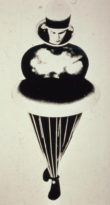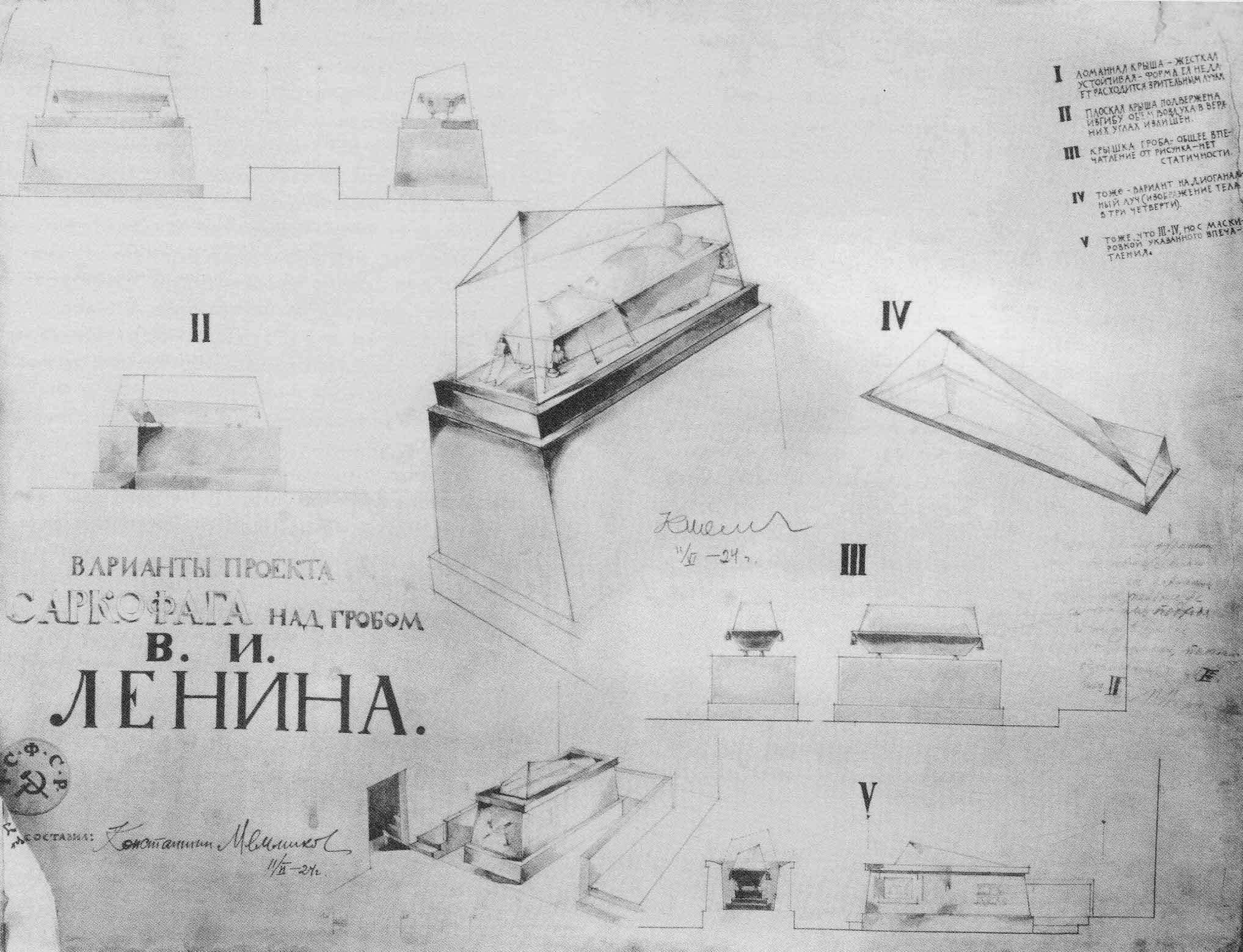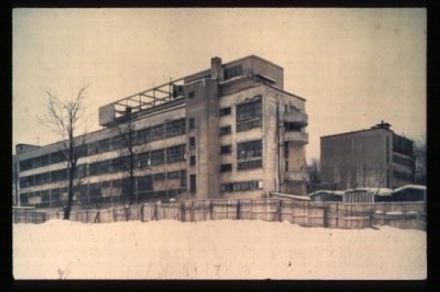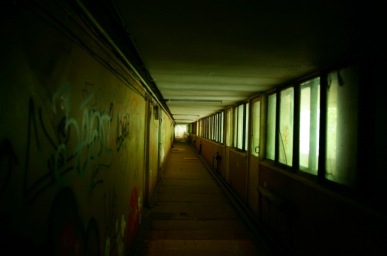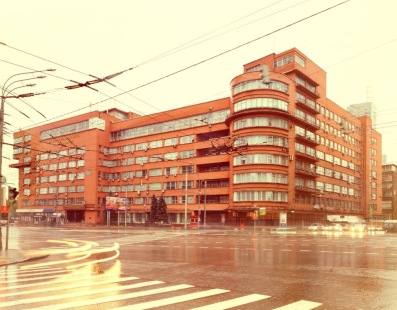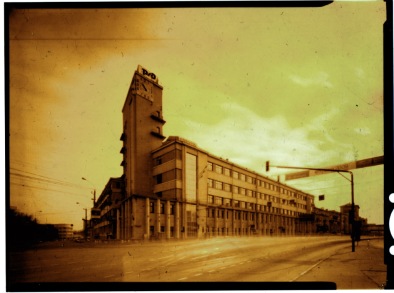Oskar Schlemmer
![]()
Image: Walter Gropius, design for the
“total theater” at the Bauhaus (1926)
![]()
From a lecture-demonstration at the Bauhaus by Oskar Schlemmer to the Circle of Friends of the Bauhaus (March 16, 1927).
Before speaking about theater proper at the Bauhaus, we should first take a brief look at the way in which it came about, consider the justification for its existence, and observe its path and its goals. In short, we should review its primary endeavor, which is to approach all our material from a basic and elementary standpoint. It is because of this endeavor that the stage here has became an organic link in the total chain of Bauhaus activity.
It is natural that the aims of the Bauhaus — to seek the union of the artistic-ideal with the craftsmanlike-practical by thoroughly investigating the creative elements, and to understand in all its ramifications the essence of der Bau, creative construction — have valid application to the field of the theater. For, like the concept of Bau itself, the stage is an orchestral complex which comes about only through the cooperation of many different forces. It is the union of the most heterogeneous assortment of creative elements. Not the least of its functions is to serve the metaphysical needs of man by constructing a world of illusion and by creating the transcendental on the basis of the rational.
.
From the first day of its existence, the Bauhaus sensed the impulse for creative theater; for from that first day the play instinct [der Spieltrieb] was present. The play instinct, which Schiller in his wonderful and endur ing Briefe über die ästhetische Erziehung des Menschen [Letters on the Aesthetic Education of Man, (1795)] calls the source of man’s real creative values, is the un-self-conscious and naIve pleasure in shaping and pro ducing, without asking questions about use or uselessness, sense or non sense, good or bad. This pleasure through creation was especially strong at the beginning (not to say the infancy) of the Bauhaus
…….in Weimar
and was expressed in our exuberant parties, in improvisations, and in the imaginative masks and costumes which we made.
We might say that during the course of its development, this state of naïveté, which is the womb of the play instinct, is generally followed by a period of reflection, doubt, and criticism, something that in turn can easily bring about the destruction of the original state, unless a second and, as it were, skeptical kind of naIvete tempers this critical phase. Today we have become much more aware of ourselves. A sense for standards and constants has arisen out of the unconscious and the chaotic. This, together with concepts such as norm, type, and synthesis, points the way to creative form [Gestaltung].
Costumes
.
It was due only to intense skepticism, for example, that in 1922 Lothar Schreyer’s plan to form a Bauhaus theater failed; at the time there was practically no climate for strong philosophical points of view (Weltanschauungstendenzen), none at least which could be found in the sacral garb of Expressionism. On the other hand, there was a distinct feeling for satire and parody. It was probably a legacy of the Dadaists to ridicule automatically everything that smacked of solemnity or ethical precepts. And so the grotesque flourished again. It found its nourishment in travesty and in mocking the antiquated forms of the contemporary theater. Though its tendency was fundamentally negative, its evident recognition of the origin, conditions, and laws of theatrical play was a positive feature.
The dance, however, stayed alive throughout this period. During the course of our growth it changed from the crude country dancing of our “youth hostelers” [Rüpeltanz der Wandervögel] to the full-dress fox trot. The same thing happened in music: our concertina metamorphosed into our jazz band (A. Weininger). Group dancing found its image reflected on the stage in the dance of the individual. And from this developed our formalized use of color [das Farbig-Formale], and the Mechanical Ballet (K. Schmidt, Bogler, Teltscher). Experimentation with colored light and shadows became the “Reflectory Light Play” (Schwertfeger and L. Hirschfeld Mack). A marionette theater was begun.
While we had no stage of our own in Weimar and had to give our productions on a sort of dubious suburban podium there, since the move
…….to Dessau
we have been in the enviable position of having a “house-stage” of our own in the new Bauhaus building. Although it was originally meant to be a platform for lectures as well as a stage for performances on a limited scale, it is nevertheless well equipped for a serious approach to stage problems.
Architecture
.
For us these problems and their solution lie in fundamentals, in elementary matters, in discovering literally the primary meaning of Stage. We are concerned with what makes things typical, with type, with number and measure, with basic law. • • • I scarcely need to say that these concerns have been active, if not necessarily dominant, during all periods of great art; but they could be active only when preconditioned by a state of hypersensitive alertness and tension, that is, when functioning as the regulators of a real feeling of involvement with the world and life. Of many memorable statements which have been made about number, measure, and law in art, I cite only one sentence from Philipp Otto Runge: “It is precisely in the case of those works of art which most truly arise from the imagination and the mystique of our soul, unhampered by externals and unburdened by history, that the strictest regularity is necessary.” Continue reading



















